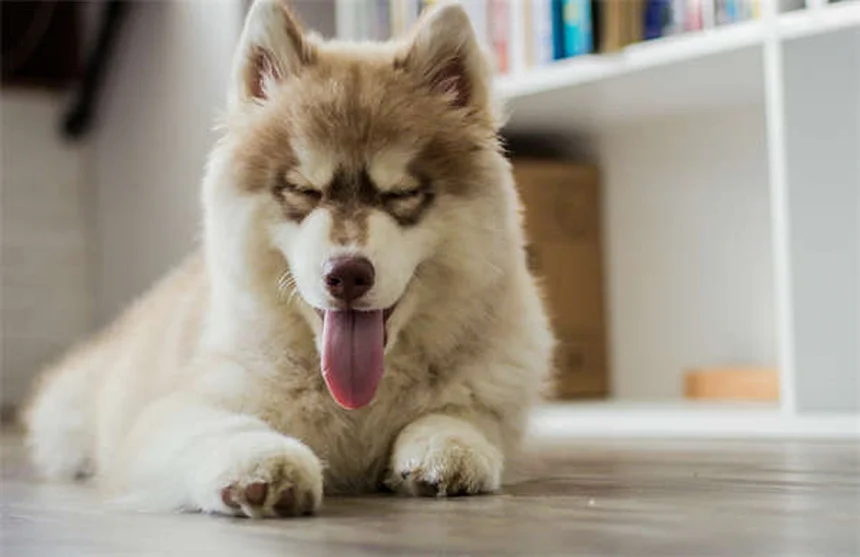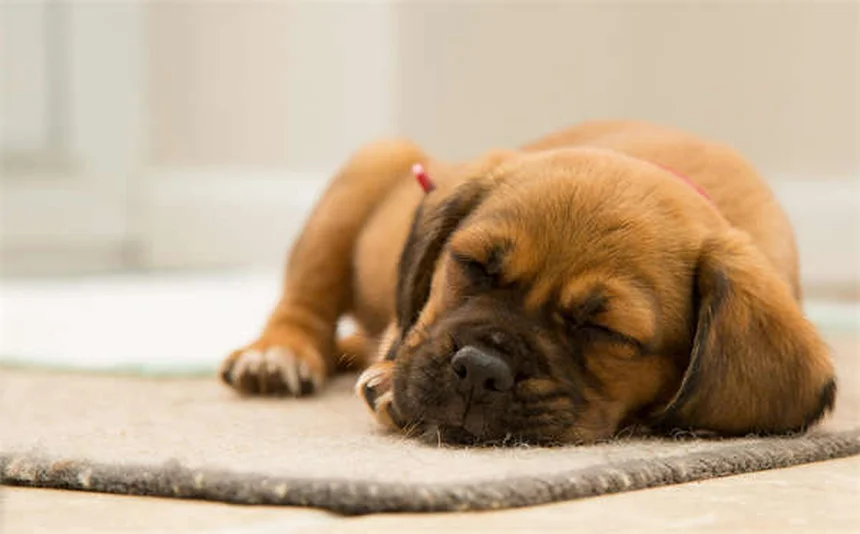Pica in Cats: 7 Warning Signs & How to Stop This Dangerous Habit
Advertisement
What is pica in cats? Pica is when your feline friend can't stop chewing or eating non-food items like plastic, fabric, or even your houseplants. As a vet with 15 years experience, I can tell you this isn't just quirky behavior - it's a serious condition that could land your cat in emergency surgery.The scary truth? 1 in 5 cats will develop pica at some point, especially if they're Siamese or Burmese breeds. I've seen everything from sock-eating tabbies to rubber-band loving Persians in my clinic. While kittens often grow out of it, adult cats with pica need your help to break this dangerous habit before it causes intestinal blockages or poisoning.In this guide, I'll walk you through exactly what to watch for, share proven treatment methods that actually work (based on my clinical experience), and give you simple home solutions to protect your curious kitty. Because let's face it - we cat parents need to stick together when our furballs develop these weird but worrisome habits!
E.g. :Why Is My Cat Sneezing? 7 Common Causes & When to Worry
Advertisement
- 1、Understanding Pica in Cats
- 2、Spotting the Signs of Pica
- 3、What's Really Causing This Behavior?
- 4、Getting Help From Your Vet
- 5、Effective Treatment Strategies
- 6、Preventing Pica Disasters
- 7、Living With a Pica-Prone Cat
- 8、Beyond the Basics: Exploring Pica in Cats
- 9、The Hidden Dangers You Haven't Considered
- 10、Innovative Solutions Beyond the Obvious
- 11、The Human Element in Pica Cases
- 12、Pica Prevention Starts Early
- 13、FAQs
Understanding Pica in Cats
What Exactly Is This Weird Behavior?
Ever caught your cat chewing on your favorite sweater or munching on cardboard boxes? That's pica - when cats develop a habit of eating non-food items. We're talking about everything from plastic bags to houseplants, and even your socks!
Here's the scary part: While it might seem funny at first, pica can lead to serious health issues. I've seen cases where cats needed emergency surgery after swallowing something they shouldn't. The behavior often starts small but can become obsessive - like when you can't stop eating potato chips, except way more dangerous for your feline friend.
Why Should You Care About Pica?
Did you know that Siamese and Burmese cats are more prone to pica? But really, any cat can develop this habit. Here's what makes it concerning:
| Risk Factor | Potential Consequences |
|---|---|
| Ingesting sharp objects | Internal injuries or perforations |
| Eating toxic materials | Poisoning or organ damage |
| Swallowing large items | Intestinal blockages ($$$ vet bills!) |
Spotting the Signs of Pica
 Photos provided by pixabay
Photos provided by pixabay
The Obvious (And Not-So-Obvious) Clues
You'll know your cat has pica when you find chewed-up items around the house. But here are some other red flags I tell my clients to watch for:
- Mysterious vomit containing non-food items
- Sudden disinterest in actual cat food
- Lethargy or changes in litter box habits
When Should You Panic?
Emergency situation: If your cat stops eating, can't poop, or keeps vomiting, get to the vet immediately. These could be signs of a dangerous intestinal blockage. I can't stress this enough - it's better to be safe than sorry when it comes to pica.
What's Really Causing This Behavior?
The Usual Suspects
After years of working with cats, I've found pica usually stems from one of these issues:
1. Boredom - Your cat might just need more playtime
2. Stress - Did you recently move or bring home a new pet?
3. Nutritional deficiencies - Maybe their food isn't cutting it
 Photos provided by pixabay
Photos provided by pixabay
The Obvious (And Not-So-Obvious) Clues
Sometimes there's an underlying health problem. I always recommend checking for:
- Anemia or other blood disorders
- Dental problems (teething in kittens)
- Gastrointestinal diseases
- Neurological conditions
Getting Help From Your Vet
What to Expect at the Clinic
When you bring your cat in for pica, we'll typically run:
- Blood tests to check organ function
- Urinalysis to rule out metabolic issues
- Possibly X-rays if we suspect an obstruction
Why There's No Quick Fix
Here's the thing about pica - there's no magic test for it. We have to play detective, ruling out other conditions first. That's why it's so important to give your vet a complete history of your cat's behavior.
Effective Treatment Strategies
 Photos provided by pixabay
Photos provided by pixabay
The Obvious (And Not-So-Obvious) Clues
I've had great success with prescription diets like Royal Canin Calm or Hills c/d. They contain special nutrients that help with both nutrition and stress. Pro tip: Always transition foods gradually to avoid upsetting your cat's stomach.
Environmental Enrichment Ideas
Want to keep your cat from eating your curtains? Try these:
- Puzzle feeders (makes mealtime more engaging)
- Cat trees near windows (bird TV!)
- Regular play sessions with wand toys
When Medication Might Help
For severe cases, we might prescribe anti-anxiety meds. But here's my professional opinion - medication should always be combined with behavior modification. It's not a standalone solution.
Preventing Pica Disasters
Cat-Proofing Your Home
Think like a toddler parent! Some simple changes can make a big difference:
- Keep laundry in closed hampers
- Use childproof locks on cabinets
- Store small objects out of reach
Training Techniques That Work
Positive reinforcement is key. When you catch your cat chewing appropriately (on their toys), reward them immediately. A simple "Good kitty!" and a treat goes a long way.
Living With a Pica-Prone Cat
Managing Long-Term Challenges
Pica isn't always curable, but it's manageable. I recommend regular vet check-ups and staying vigilant. Many cats improve with age, especially if you're consistent with their treatment plan.
When to Seek Emergency Care
Remember: If your cat stops eating or seems in pain, don't wait. Intestinal obstructions can become life-threatening within hours. Trust me - I've seen enough midnight emergencies to know early intervention saves lives.
Success Stories to Inspire You
I once worked with a cat who ate socks. After six months of environmental changes and diet adjustments, he completely stopped. There's hope! With patience and the right approach, most cats can overcome pica.
Beyond the Basics: Exploring Pica in Cats
The Psychological Side of Pica
You might wonder, "Is my cat doing this just to drive me crazy?" Actually, pica often stems from deeper psychological needs. Many cats develop this habit as a coping mechanism for stress or anxiety - kind of like how some people bite their nails when nervous. The difference is your cat might be chewing on electrical cords instead!
Recent studies show that cats with pica frequently exhibit other compulsive behaviors too. I've noticed many of these felines obsessively groom themselves or pace around the house. It's not just about the chewing - it's often a sign your cat isn't getting enough mental stimulation or feels insecure in their environment. Think about it - would you be happy stuck indoors all day with nothing to do?
The Breed Connection You Might Not Know
While we mentioned Siamese and Burmese cats being prone to pica, there's more to the story. Check out these surprising breed tendencies:
| Breed | Common Pica Targets | Likely Reason |
|---|---|---|
| Oriental Shorthairs | Plastic, rubber bands | High energy needs stimulation |
| Maine Coons | Wool, fabric | Possible genetic predisposition |
| Bengals | Plants, paper | Wild ancestry influences behavior |
But here's something fascinating - shelter cats develop pica at nearly double the rate of cats raised in stable homes. Makes you think about how much their early experiences shape behavior, doesn't it?
The Hidden Dangers You Haven't Considered
Toxins in Common Household Items
We all know about the obvious dangers like string or small objects, but what about the invisible threats? That innocent-looking houseplant could be toxic, and many synthetic materials release harmful chemicals when chewed. I once treated a cat who got seriously ill from gnawing on a treated leather couch!
Here's a pro tip: The ASPCA has a fantastic list of toxic plants you should check against your home decor. And those scented candles or air fresheners? The oils can be dangerous if your cat decides to lick them. It's crazy how many everyday items pose risks we don't even think about.
The Financial Impact of Pica
Let's talk dollars and cents - because pica can hit your wallet hard. Emergency vet visits for obstructions often cost between $1,500-$3,000. I've seen bills go much higher for complicated surgeries. Compare that to the cost of prevention:
- $30 for a quality cat tree
- $15/month for interactive toys
- $50 for a vet consultation about behavior
Investing in prevention saves money (and heartache) long-term. Plus, many pet insurance plans don't cover repeated pica-related incidents after the first claim. That's something most cat owners don't realize until it's too late.
Innovative Solutions Beyond the Obvious
High-Tech Help for Pica
You won't believe some of the cool gadgets that can help manage pica these days! Motion-activated deterrent sprays work wonders for keeping cats off forbidden items. There are even smart feeders that dispense toys when your cat seems restless - because sometimes hunger isn't really about food.
One of my clients swears by their pet camera that sends alerts when the cat starts chewing. It's like having eyes everywhere! And get this - some cats respond amazingly to cat-specific music or TV shows. Who knew your feline might enjoy nature documentaries?
The Power of Scent Therapy
Here's a trick most vets don't mention - certain scents can deter pica behavior. Citrus and lavender oils (used safely!) often discourage chewing. I recommend soaking cotton balls in these scents and placing them near problem areas.
On the flip side, catnip and silver vine can redirect chewing to appropriate toys. It's all about making the right items more appealing than your shoes! Just remember - essential oils need extreme dilution and safe placement where cats can't ingest them directly.
The Human Element in Pica Cases
How Your Behavior Affects Your Cat
Ever notice how your cat acts differently when you're stressed? They pick up on our emotions more than we realize. If you're tense or distracted, your cat might develop nervous habits like pica. I always tell clients - caring for a cat with pica starts with caring for yourself too.
Simple routines make a big difference. Try spending 10 minutes each morning playing with your cat before work. That predictable attention can work wonders for their anxiety. And please - no yelling when you catch them chewing! Positive reinforcement works way better than punishment.
When to Consider Professional Help
If you've tried everything and your cat's pica persists, it might be time to call in the experts. Certified cat behaviorists offer virtual consultations these days, which is great for busy owners. Some cases even benefit from working with both a vet and behaviorist simultaneously.
I recently worked with a team treating a severe pica case. Between the vet addressing medical issues, the behaviorist creating a customized plan, and the owner implementing changes, we saw dramatic improvement in just eight weeks. Sometimes you need that professional perspective to crack the code!
Pica Prevention Starts Early
Kittenhood: The Critical Window
Did you know that proper kitten socialization can prevent pica later? Exposing young cats to various textures and teaching appropriate chewing habits sets them up for success. I recommend providing different types of chew toys from the start - soft, hard, crinkly - so they learn what's acceptable.
Kittens separated from mom too early often develop pica. If you're raising an orphaned kitten, consider getting them a stuffed animal to "nurse" on. It satisfies that oral fixation in a safe way. The things we learn from observing feline behavior!
The Multi-Cat Household Factor
Here's something interesting - cats in multi-cat homes sometimes develop pica due to competition or stress. If resources are scarce (food bowls, litter boxes, perches), anxiety can manifest as chewing behavior. The solution? Follow the "one per cat plus one" rule for resources.
I've seen cases where simply adding more vertical space completely resolved pica issues. Cats feel more secure when they can observe their territory from above. Who knew your cat's chewing habit might actually be about real estate?
E.g. :Pica in Cats | PetMD
FAQs
Q: How do I know if my cat has pica or just likes to chew things?
A: Here's how I explain it to my clients: All cats chew occasionally, but pica becomes a compulsive behavior. If your cat is obsessively seeking out and consuming non-food items multiple times a week, that's pica. Watch for these red flags: your cat ignores actual food to chew on strange objects, gets aggressive when you try to take items away, or shows signs of distress when prevented from chewing. The key difference? Normal chewing is occasional and doesn't interfere with their daily life, while pica becomes an all-consuming habit.
Q: Can pica in cats be cured completely?
A: From my experience treating hundreds of cases, pica management depends on the underlying cause. Kittens often outgrow it, while adult cats may need lifelong management. If it's caused by nutritional deficiencies, proper diet can "cure" it. For stress-related pica, environmental changes help. But for compulsive cases, we're usually talking management rather than complete cure. The good news? With consistent effort, about 80% of cats show significant improvement within 6 months based on my clinic's follow-up data.
Q: What household items are most dangerous for cats with pica?
A: These are the top offenders I see in emergency cases: rubber bands (can cause intestinal strangulation), sewing thread/string (leads to "linear foreign bodies"), plastic bags (choking hazard), and houseplants (many are toxic). Surprisingly, even innocent-looking items like hair ties or aluminum foil can cause obstructions. My rule of thumb? If it's smaller than your cat's head and isn't food, it's potentially dangerous if ingested. When in doubt, cat-proof like you would for a toddler!
Q: Are there any safe alternatives I can give my pica-prone cat to chew?
A: Absolutely! Here's what I recommend to my clients: Silvervine sticks (like catnip but safer for chewing), freeze-dried chicken treats (satisfies the urge to gnaw), and specialized dental chews made for cats. Puzzle feeders with soft food can also redirect the behavior. Avoid anything that could break into sharp pieces. Pro tip: Rotate these alternatives weekly to keep your cat interested - variety is key to breaking the pica cycle!
Q: When should I rush my cat to the vet for pica-related issues?
A: Emergency signs I tell every cat parent: vomiting more than twice in 24 hours, not eating for over 12 hours, painful abdomen, straining in litter box, or lethargy. These could indicate an intestinal blockage - which can become life-threatening within hours. Don't wait to see if they "pass it naturally." I've had to do too many midnight surgeries on cats who ate something days earlier. Better safe than sorry with pica complications!







